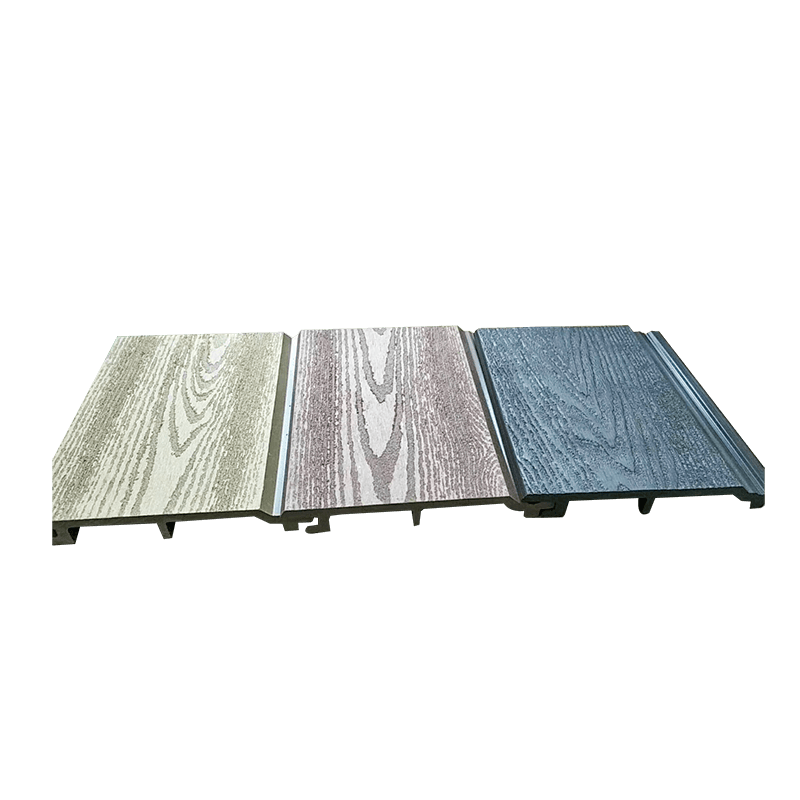Provide you with the latest enterprise and industry news.
As the demand for eco-friendly, durable, and aesthetically pleasing building materials continues to grow, WPC wall panels have emerged as a popular solution in both residential and commercial interior design. WPC, or Wood-Plastic Composite, is a versatile material made by blending wood fibers with thermoplastics. This combination results in a product that not only mimics the natural beauty of wood but also offers enhanced durability, moisture resistance, and low maintenance. As a result, WPC wall panels are increasingly being used in various applications, from decorative wall coverings to cladding for both interior and exterior use.
The composite material is processed into panels of various sizes, designs, and finishes, offering versatility and a wide range of aesthetic options. WPC wall panels can be used to cover entire walls, accentuate certain areas, or even be installed as part of a ceiling or partition. They come in various textures, including wood-like finishes, smooth surfaces, and textured patterns, making them suitable for diverse design schemes.
One of the standout features of WPC wall panels is their durability. Unlike natural wood, which is prone to cracking, splintering, and warping over time, WPC panels are engineered to withstand wear and tear, making them highly resistant to damage. They are less likely to absorb moisture, preventing issues like rotting, warping, or fungal growth. This makes them an excellent choice for high-humidity areas such as bathrooms and kitchens.
WPC wall panels are inherently resistant to moisture, termites, and other pests. Unlike wood, which can be a breeding ground for termites, WPC’s combination of plastic and wood fibers ensures that it remains unaffected by moisture, mold, or insects. This makes it ideal for use in outdoor spaces, coastal environments, or areas with high humidity where traditional wood panels would deteriorate quickly.

One of the major advantages of WPC wall panels is their minimal maintenance requirements. Unlike traditional wood panels, which require regular sanding, sealing, or painting, WPC panels only need occasional cleaning to maintain their appearance. They are resistant to fading, discoloration, and scratches, meaning they maintain their aesthetic appeal over time without the need for frequent upkeep.
WPC is an eco-friendly material as it is made from a combination of recycled wood fibers and plastics, both of which are often sourced from waste products. By repurposing wood waste and plastics, WPC panels help reduce the strain on natural resources and contribute to a more sustainable building industry. Additionally, the manufacturing process of WPC panels produces fewer carbon emissions compared to traditional wood processing.
WPC wall panels come in a wide variety of designs, colors, and finishes, allowing for greater flexibility in interior design. Whether you're looking for a sleek, modern look with smooth, glossy finishes, or a rustic, natural appearance with wood grain textures, WPC panels can be customized to suit your style. They can also be painted or stained to match the color scheme of the room, giving them a high degree of versatility.
WPC wall panels offer the beauty of wood without the drawbacks of real wood. With their realistic wood textures and finishes, these panels can add warmth, elegance, and sophistication to any interior. Whether used in living rooms, bedrooms, or commercial spaces like hotels and offices, WPC panels create a natural yet modern look that is visually striking.
While natural wood wall panels can be expensive due to material costs and the need for regular maintenance, WPC wall panels offer a more affordable alternative. They are generally priced lower than high-quality wood panels, while still providing a similar aesthetic. Their long lifespan and low maintenance costs also contribute to the overall cost-effectiveness of WPC panels, making them a great option for both budget-conscious homeowners and businesses.
WPC wall panels are easy to install, which helps reduce labor costs and installation time. Many WPC panels come with a tongue-and-groove design or interlocking system, making them simple to fit together withoutols or processes. This ease of installation also makes them a great choice for DIY projects, as they can be installed quickly and with minimal expertise.
In addition to their aesthetic and functional benefits, WPC wall panels also offer thermal insulation properties. The composite material helps to regulate indoor temperatures, providing an additional layer of heat insulation that can help reduce energy consumption in both summer and winter. This makes WPC panels not only an attractive option but also a practical one for energy-efficient homes and buildings.
WPC wall panels can be used in a variety of applications, both indoors and outdoors. Some of the most common uses include:
WPC panels are increasingly being used in homes to create feature walls, accent walls, or to cover entire rooms. They are ideal for living rooms, dining areas, bedrooms, and even bathrooms, where their moisture resistance and aesthetic appeal make them a popular choice. Whether you prefer a sleek, modern finish or a rustic wood-like texture, WPC panels can fit seamlessly into any style.
In commercial settings, WPC wall panels are used in offices, retail stores, hotels, restaurants, and other public spaces. Their durability, ease of maintenance, and elegant appearance make them a practical and attractive choice for high-traffic areas. They are often used as wall cladding or partitions to create stylish and functional environments.
WPC wall panels are not limited to indoor use; they are also widely used for exterior cladding. Due to their weather-resistant properties, they can be used to create durable and low-maintenance exterior walls for buildings, fences, or garden features. They are also commonly used in the construction of outdoor furniture and decking.



 English
English Español
Español














